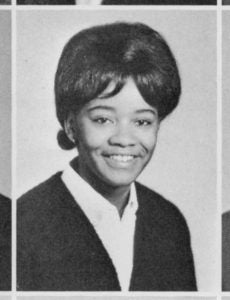Timeline brings together civil rights movement at ECU and beyond
University Archives continues to add to a civil rights timeline project that began with an exhibit curated by Patrick Cash during the summer of 2019.
The Pursuit of Civil Rights at East Carolina: A Timeline intertwines the civil rights movement at ECU with what was simultaneously happening across the state and nation. The timeline, which was announced to library staff as a full-scale digital timeline in May of 2021, currently focuses on a plethora of major moments from the 1950s, ’60s and ’70s.
“We have a pretty good collection of materials from the time period of the ’60s and into the early ’70s, and then it kind of winds down a little bit as far as our resources,” said Cash, an assistant university archivist at ECU Academic Library Services. “With that said, we still have plenty of important events in the university’s history that we hope to add to the timeline in the near future. Really this can go as far as we want to take it, and that is the nice thing about this. … At the same time, if it doesn’t continue on into what I would like it to, what it is already is very helpful and very informative. I think it’s a good showcase of not only what we already have in our university archives, but also a good showcase of the history of the university.”
The first entry begins with May 18, 1896, when a Supreme Court ruling established the “separate but equal” doctrine.

Laura Marie Leary from the 1966 Buccaneer, yearbook of East Carolina College. (ECU Digital Collections)
Above all else, what Cash saw when he dove into the history of the civil rights movement at ECU and the University of North Carolina System was the power of students to initiate change.
“The power that students have when they organize together is something I think we can never forget when we are working at a university,” he said.
The timeline includes different forms of media, including an oral history interview with Laura Marie Leary. She was the first Black student to enroll at the institution full-time in the fall of 1962. The previous year is when then-president Dr. Leo Jenkins proposed to the Board of Trustees that East Carolina College admit qualified African Americans.
Cash, who worked with several colleagues across the library’s divisions and departments, received initial positive feedback about the significance and execution of the project. He also hopes it continues to resonate as a valuable resource to a widespread audience.
“It made me proud for people to see the really good type of work that can come out of university archives, and how students can use these records and classrooms can use these records,” Cash said. “We get requests and now we can point to an entire compilation of things you can use. Pick and choose. I just think the topic is really relevant and we all know what we have been going through as a nation the last couple of years. … There’s too many examples of when integration is forced, bad things happen. That is the argument (Jenkins) made to the Board of Trustees and while the situation on campus was not ideal, history gives us plenty of instances in which integration resulted in violence. While there were some bumps in the road, in the larger picture compared to other places, this was a relatively peaceful and successful integration.”
